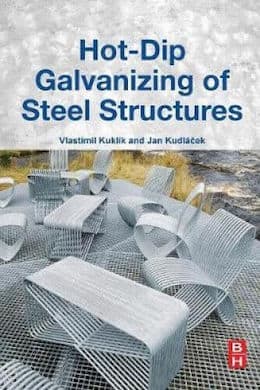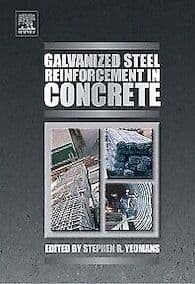
-----
Black corrosion on galvanized sheet metal
for Engineers, Shops, Specifiers

avail from eBay, AbeBooks, or Amazon

avail from eBay, AbeBooks, or Amazon

avail from eBay, AbeBooks, or Amazon

avail from eBay, AbeBooks, or Amazon
avail from Amazon
"User's Guide to Hot Dip Galvanizing for Corrosion Protection in Atmospheric Service" by NACE (1997 only rarely avail.)
avail from AbeBooks, or Amazon
(as an Amazon Associate & eBay Partner, we earn from qualifying purchases)
Q. We have recently seen the phenomenon of black corrosion on a galvanized sheet metal enclosure. The sheet metal has been pre-plated prior to punching and forming. The black corrosion occurs in mating areas where the enclosure base and cover are screwed together or are in contact, especially near areas where the sheetmetal has been sheared by a punch press. We also see some of the blackening along the edges of parts that have been sheared even though they do not mate with another part. The enclosure is in an office environment (21 °C), is mounted in a server rack, and is subject to minor vibration. Does anyone have any idea as to what this black corrosion is, and what it may be caused by?
chad bohlcomputer server - osseo, Minnesota
2005
A. Dear Bohl,
If minor vibration is involved and if you observe black corrosion products in the mating areas then it could be due to the fretting corrosion and oxidation of the exposed region.

T.S.N. Sankara Narayanan
- Chennai, Tamilnadu, India
(ed.note: The good doctor offers a fascinating blog, "Advancement in Science" )
A. Yes, we are familiar with this kind of surface degradation in Galvanised coils transported over long distance, but never at our production line. We analysed more than 100 samples of galvanised steel with these ugly marks, characterised by mirror image (with varying intensity) on both sides of mating surfaces.
These are basically oxidation patches, with the affected area containing more than 2 or 3 times Oxygen than the unaffected matrix. EN specification, 10327, if I remember the number correctly, contains a reference to this defect.
We found this defect in our material transported over a long distance, either in rail, road or ships. It can be minimised by lubricating the surface, if friction cannot be avoided. Special Passivation treatment of the surface after coating, can help in reducing the defect, by preferentially leaching out the Al2O3 often found responsible for the asperities on the surface, causing the localised black patches. Please refer to the paper on Fretting published in Galvatech 2007, held at OSAKA, authored by A Chattodpadhyay and others.
steel company - Jamshedpur, Jharkhand, India
March 15, 2009
Q, A, or Comment on THIS thread -or- Start a NEW Thread
